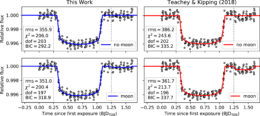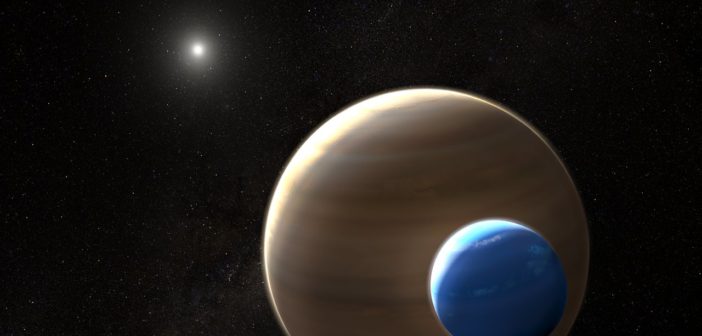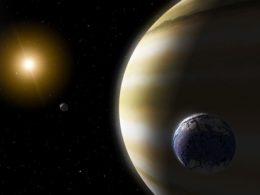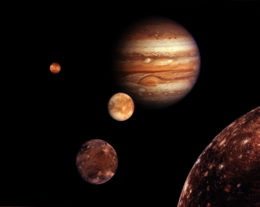Last October, the first discovery of a potential exomoon was announced. But is Kepler-1625b-i an actual moon in another solar system? Or just an artifact of data reduction?
A Tricky Business
Moons are a useful diagnostic — they can provide all kinds of information about their host planets, like clues to formation history, evolution, and even whether the planet might be habitable. What’s more, exomoons themselves have been indicated as potential targets in the search for life: while a habitable-zone gas-giant planet might not be an ideal host, for example, such a planet could have moons that are.Given all we stand to learn from exomoons, it’d be great to find some! But for all that our solar system is chock full of moons (at last count, Jupiter alone hosts 79!), we’ve yet to find any sign of exomoons orbiting planets beyond the solar system.
This may well be because exomoon signals are difficult to spot. Not only would an exomoon’s signal be tiny compared to that of its host planet, but we also would need to separate that signal from the host’s — a tricky business. Throw in some instrument systematics to obscure all the data, and exomoon identification becomes even more of a challenge.For these reasons, it was a pretty exciting announcement last fall when Columbia University astronomers Alex Teachey and David Kipping presented Kepler-1625b-i, a signal that they argued represented an exomoon around the gas giant Kepler-1625b. But a healthy dose of scientific caution has sent other teams scrambling to explore these data and draw their own conclusions — and one of these groups is calling the exomoon discovery into question.
Waiting for Consensus

Best-fit models for the Kepler 1625 light curve assuming a planet and no moon (top) or moon (bottom). Data as analyzed by Kreidberg et al. are on the left (blue); data as analyzed by Teachey&Kipping are on the right (red). Kreidberg et al. find that the best fit is given by the no-moon model. Click to enlarge. [Kreidberg et al. 2019]
According to Kreidberg and collaborators, the discrepancy between their results and Teachey and Kipping’s is most likely due to differences in data reduction. Teachey and Kipping have responded to this work with additional analysis in a recent paper submitted to AAS journals, but the debate is far from settled.
So is there an exomoon, or isn’t there? We don’t know yet, but that’s okay!
The case of Kepler 1625 is a beautiful illustration of the messy reality of the scientific process: sometimes the data don’t immediately spell out an answer, and it takes more time, more analysis, and likely more observations before the scientific community reaches a consensus. This isn’t a bad thing, though — this is science being done right! Keep an eye on the story of Kepler 1625b-i going forward; we’re bound to continue to learn about this maybe/maybe-not exomoon.
Citation
“No Evidence for Lunar Transit in New Analysis of Hubble Space Telescope Observations of the Kepler-1625 System,” Laura Kreidberg et al 2019 ApJL 877 L15. doi:10.3847/2041-8213/ab20c8



1 Comment
Pingback: Exomoon or No Exomoon? – Sky & Telescope | SPACE FORCE